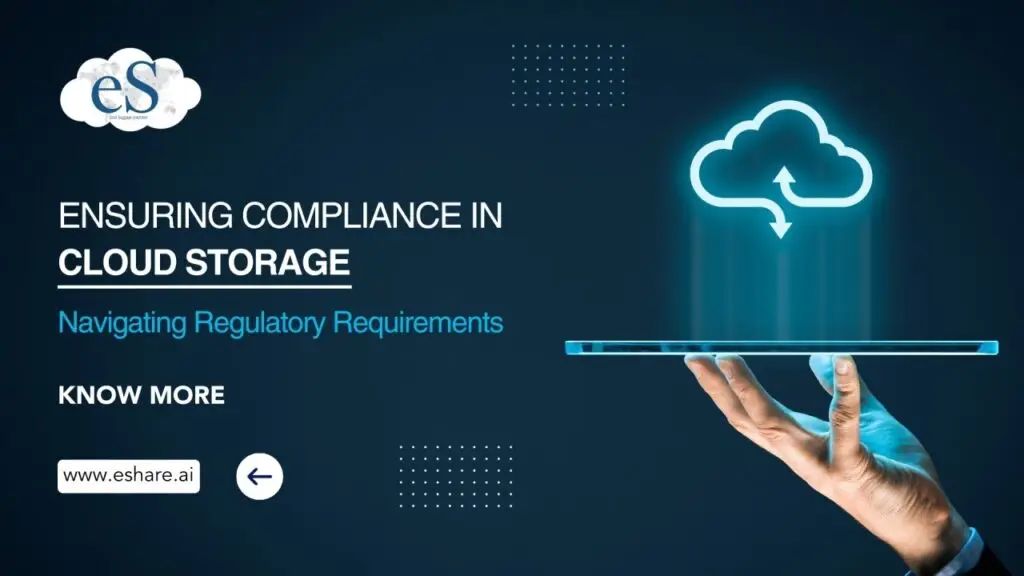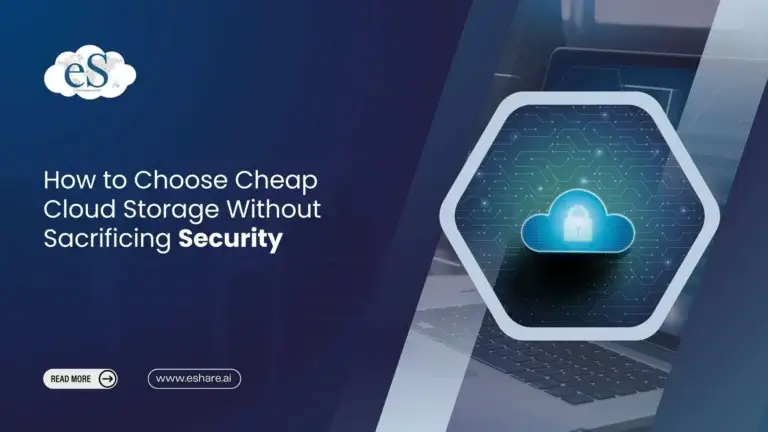In an era where data is the lifeblood of businesses, ensuring compliance with cloud storage has become paramount. Navigating the ever-evolving landscape of regulatory requirements is critical to managing data securely.
In this blog, we focus on applicable cyber best practices that businesses can use to maintain compliance and keep using the cloud while giving a general overview of the numerous laws and regulations that impact cloud security.


Gowtham Chand M
Content Writer
For Organization’s Growth, Comprehensive File Storage and Sharing Options
eShare.ai provides up to 5GB of free storage and limitless free data sharing for those times when you need to store and move big files that remain in storage.
Why is compliance crucial?
Think of compliance as the ultimate security blanket for your data. It protects you from hefty fines, reputational nightmares, and even legal action. Whether you’re a healthcare giant juggling patient records or a fiery startup storing customer data, knowing your regulatory ropes is essential.
Understanding the Regulatory Landscape:
- The first step in navigating compliance in cloud storage is understanding the regulatory landscape that governs your industry.
- Depending on your geographic location and the nature of your business, you may be subject to various data protection and privacy regulations.
- Typical regulations include GDPR in Europe, HIPAA in healthcare, and CCPA in California. Thoroughly research and identify the specific rules applicable to your organization.
Implementing data encryption:
- Data breaches may have severe financial and legal repercussions. Putting strong encryption in place is essential to complying with cloud storage regulations.
- Ensure that data at rest, in transit, and during processing is encrypted using robust encryption algorithms. This protects sensitive information and helps meet the encryption requirements of various data protection regulations.
Access Controls and Authentication:
- Controlling access to data is a critical component of compliance. Implement granular access controls to restrict who can access, modify, or delete sensitive information.
- Utilize robust authentication mechanisms, such as multi-factor authentication (MFA), to enhance security and ensure that only authorized personnel can access critical data. Regularly review and update access permissions as organizational roles change.
Regular audits and monitoring
- Compliance is an ongoing process, not a one-time event. Regular audits and monitoring of your cloud storage system are required to identify and address potential compliance issues early on.
- Implement automated monitoring systems that alert you to questionable activity in real-time. Conduct regular audits to ensure your data storage processes align with the most recent regulatory requirements.
Employee training and awareness:
- Human error is a common cause of compliance breaches. Ensure that your employees are well-versed in compliance protocols and understand the implications of mishandling data.
- Regularly conduct training sessions to update employees on regulatory changes and reinforce the key to compliance in daily operations.
Conclusion
Ensuring compliance with cloud storage requires technological solutions, strategic planning, and ongoing vigilance.
By understanding the regulatory landscape, choosing a compliant cloud service provider, implementing robust security measures, and advancing a culture of compliance within your organization, you can confidently navigate the complexities of regulatory requirements.







